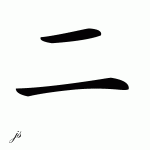Siu Nim Tao
By Evan Tate
Siu Nim Tao
The first and most important form in the art of Wing Chun.
There are almost as many variations in the Siu Nim Tao from as there are different lineages of Wing Chun. Some masters wanted to keep everything “original”, others saw the need for improvements. Others wanted to emphasize a specific aspect over the other. Not one of these variations are “more authentic”, or “more correct” than the other.
The “Little Idea” (as Siu Nim Tao is often translated) conveys not only the most common techniques used in Wing Chun, but emphasizes certain skills to be learned.
Usually, the first 3 sections of the form are performed relatively slowly (with exception of the strikes). One may wonder why the third section, where the Tan Sau extends from the centerline, turns to a Wu Sau, withdraws, and then forms a Fuk Sau before extended forward once again? This occurs three times on each side.
In Chinese Martial Arts (Wu Su), repetition is often a way of encoding the importance of a certain skill. Yes, sometimes there were also religious meanings, but nonetheless it was important to convey the importance of a skill to the warrior.
One interpretation of this repeated movement is that the practitioner learns to relax his/her energy before dispersion within a short distance. As the hand moves outward along the centerline, the abdomen is pressed together, the back is arched slightly, as the hand comes forward to strike with the Wu Sau, the back is straightened. As the hand returns, the body is contracted once again.
Some lineages may not practice the Siu Nim Tao in this way, and as said above, that’s OK. May southern Kung Fu styles emphasize the importance of being able to strike with full power in short range distance. The idea of the “One-Inch Punch” does not only exist in Wing Chun, or Bruce Lee’s Jeet Kune Do. This is an older concept that also exists in Southern Mantis and other styles.
From the fourths section, the movements become faster and some sections having many movements. Each technique is demonstrated on either side of the body. Only in the last section do the arms work together displaying two different arm positions.
During the entire form one is standing in a stationary position. The “Yee Ji Kim Yuen Ma“, aka “Character two, goat-clamping stance”. The legs form a chinese character number 2, a short line (between the knees) and a long line (between the feet). From above this is also formed between the toes (short line) and between the heels (long line). The knees are put under tension toward each other as though one would hold a goat between the legs and trying to prevent it from running away.
This stance strengthens the legs and trains discipline. One would not always fight in this position, by all means no, but it is an important to understand the flexibility of this stance.
The Siu Nim Tao, just like many chinese kung fu forms, is NOT a fighting sequence but merely a “toolbox”. It displays various “ideas” of the art. Actually, one could decide to perform the sections of the SNT in a different sequence and it would not really matter. The purpose behind the form would not really change.
In later forms, Chum Kiu and Biu Tze, there are very few “new” techniques. There are only new “ideas” of using the techniques in those form. But more on those forms in future posts.
The Siu Nim Tao is so important to Wing Chun that it is said, if your “Siu Nim Tao is poor, your Wing Chun is poor.”
Source: https://wingchunsihing.wordpress.com/2014/06/16/siu-nim-tao/
